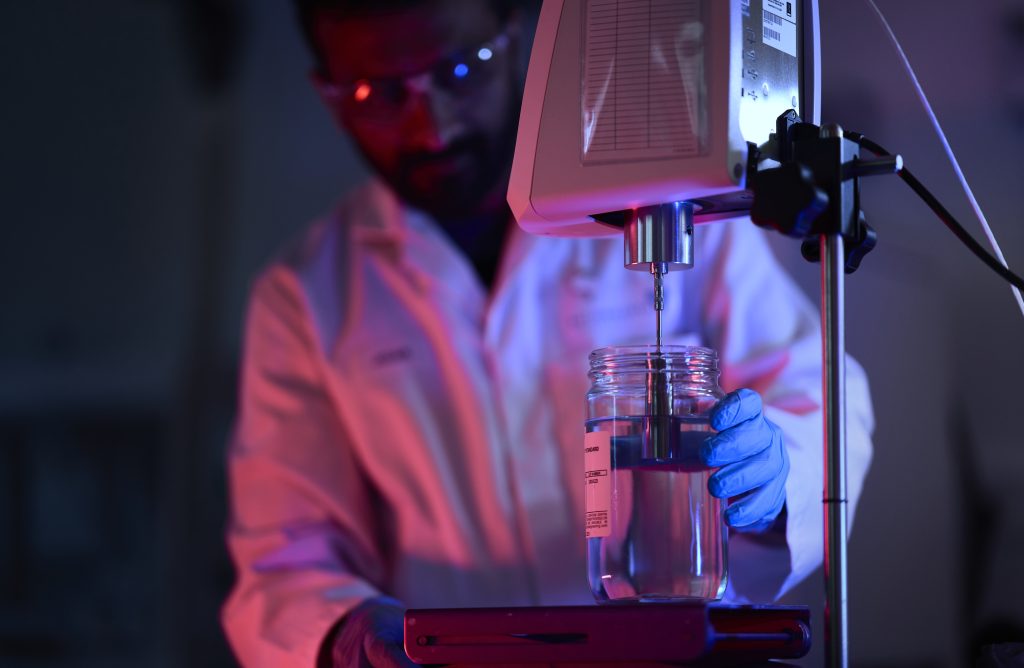For over 40 years, Butterworth Laboratories has provided independent, contract analytical services to the global pharmaceutical and related industries.
Viscosity measurement, what would Newton think? Part 2
8 August 2024
In part one of our viscous Newtonian explorations, I examined kinematic or capillary viscosity measurement and briefly discussed a Newtonian liquid. In this part, we will examine sample preparation and rotational or apparent viscosity.
One of the main causes of Out-of-Specification results when testing solid samples is sample preparation issues. These can be further divided into issues with the sample preparation itself or issues with the provided preparation instructions.
Many materials, such as Hypromellose and Carboxymethylcellulose sodium, need to be dissolved with care. The sample must be added slowly to water with a fast rate of stirring and the correct stirring mechanism. Some materials form a colloid and are added to hot water to disperse, which is then cooled to form the solution to be measured.
A few monographs contain full information, such as preparation details and measurement conditions, but many do not. They may state, for example, to prepare at the concentration on the label. This can be where the problems start; a supplier may state their specification applies to a 2% solution; however, this is rarely sufficient information. Suppliers have often developed their own specific preparation methodology and do not readily supply this information, they may also have specific measurement requirement that are not included in a monograph method. The overall lesson is to try to get as much information about how a viscosity value on a supplier certificate was generated if you want to avoid problems down the line.
Once you are happy with your sample solution you are ready to measure. In part one, I talked about the potential impact of viscometer size when measuring non-Newtonian fluids (and most prepared excipients for measurement are going to be non-Newtonian) by kinematic or capillary viscosity. Similar issues occur when reading using apparent or rotational viscosity instruments, but the impacts can be greater, and the number of parameters that can have an effect multiplies.
When measuring rotational viscosity, the first thing to ensure is the solution temperature is stabilised at the correct temperature. The next thing to consider is the size of the vessel holding the sample solutions; there are standard-size vessels for some determinations, as the vessel dimensions can affect the reading. Drag from friction between vessel walls and solution, for example, may give a false high reading. The determination is performed with a spindle which rotates in the solution and the resistance (or deflection) against this rotation is proportional to the viscosity. Different spindles will give different results from the same solution due to the interactions of the spindle and solution. Different instruments using the same spindle may even give different readings as the instrument’s internal spring that measures resistance will behave differently. There are other factors to consider, too, like shearing, rotation speed, elastic effects and many more, all of which are due to non-Newtonian behaviour.
So there is a myriad of factors to consider when making viscosity measurements, but there is one overarching point: consistency is vital.
Tim Goddard
Laboratory Manager – Inorganic and General Chemistry